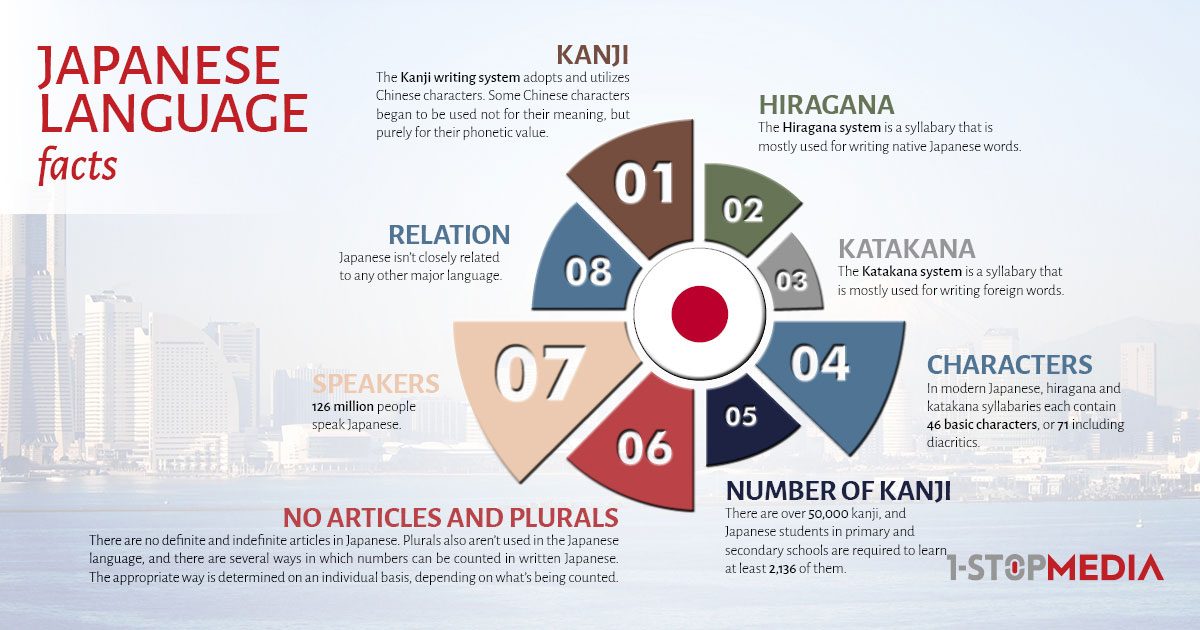Japanese Language
Japanese translation can definitely be a struggle for people who approach it for the first time. It’s not as easy as saying that one language is objectively easier to handle than another. This can be a very subjective experience — just like language learning.
Each language has its associated translation issues that need to be considered before any text can be translated. In Japanese translations, one of the first things clients need to understand is that the target audience usually has high stylistic considerations. Moreover, there’s a rigorous protocol one must follow when addressing such an audience.
The Japanese Media Scene
Japan is very intriguing to the rest of the world due to the fascinating culture and the country itself. Some of the most iconic Asian movies are actually from Japanese directors like Yasujiro Ozu and Hirokazu Kore-Eda and in fact, are very good examples for Japanese media translation. Another genre that already has its place on the international scene is anime, which definitely has seen its share of translation challenges and mishaps in the past, as well.
Facts that affect Japanese to English and to other languages translations:

The complexity of Japanese translation
1. The written language > Translation Services
- Honorification (or keigo in Japanese) can be categorized into three kinds; polite language (teinei-go), respectful language (sonkei-go) and humble language (kenjo-go). It’s very important that these three are used appropriately, as the situation demands.
- One of the biggest challenges for Japanese translators is the fact that language evolves not only in time but also based on people’s relationships. A simple example is if you talk about your manager with other people. In this case, you will use kenjo-go (humble language). This is done because your boss is inside your own circle. However, when you speak to your manager directly, you will use sonkei-go to show your respect and be polite since your status is different.
- Kanji is known as one of the most difficult things in Japanese, because of the different way each Kanji character is written, which is completely different from how English words and structured sentences work. Rather than using words and clauses to convey meaning and structure, kanji relies on different strokes, combined in complex character sets. Their meaning is inferred from their placement and their position within a set of characters, and there are several ways of “reading” many kanji.
- Grammar While English and most Western languages have a Subject-Verb-Object syntactical structure, the structure of Japanese takes on the opposite form: Subject-Objective-Verb. This must be kept in mind especially when translating or localizing forms, as simply translating them in their original order can result in text that’s very difficult to follow or doesn’t make any sense.
- Name Structure The Japanese name structure differs from that of most of the Western cultures too. While Western names take the “First Name + Surname (Last Name)” structure, that of Japanese takes the opposite; “Surname + First Name”. This needs to be considered and specified when content needs to be fully localized, especially in systems or situations where end-users need to fill out forms and enter their names along with other information so that notifications or other informative types of messages such as emails/letters can be sent out to them based on that information.
2. The spoken language > Media Translation
- Homophones If you thought that English has a lot of homophones (words that mean different things but are pronounced the same way), try studying Japanese. You’ll then find that there are cases where one pronunciation can be mean different things.
Example: “hashi” can mean three things depending on their kanji, and we can also distinguish the meaning by the tone (just like in Chinese) in some cases.
橋: bridge (with a stress on the i)
箸: chopsticks (with a stress on the a)
端: corner, edge (the same pronunciation as 橋)
Japanese presents another big problem for translators when it comes to complex sentences and sayings. It takes a skilled translator to make sure they are able to put something on paper that makes sense in English while retaining and conveying the original Japanese meaning well.
1-StopMedia’s solution for you
At 1-StopMedia we believe that sharing our experience with our clients and partners is an essential part of delivering the services your company needs. We branched out from 1-StopAsia with the single purpose of concentrating on improving our media translation services and creating a flawless and tailored solution for LSPs and large business companies that require media services for Asian languages.
Drawing from over 20 years of experience, we benefit from the skillful and accurate translators we have and at the same time fit our process to match your workflow and requirements. Our project managers are experienced in working with Asian languages, work as per ISO 17100 and ISO 9001 and at the same time can advise you on the type of services your company needs.
Request a Free Quote
We, at 1-StopMedia, are aware that responsiveness and excellent project management are the essence when working within the translation industry.
If you feel it is time to improve your time-management and pay more attention to your clients, get in contact with our Production Team and check how we can help you achieve it.
Ask us anything you need to know about:
- quotes and pricing
- translations and media services
- Asian languages
Start your new project with us today! All you have to do is fill in the form on the right and get your free quote.